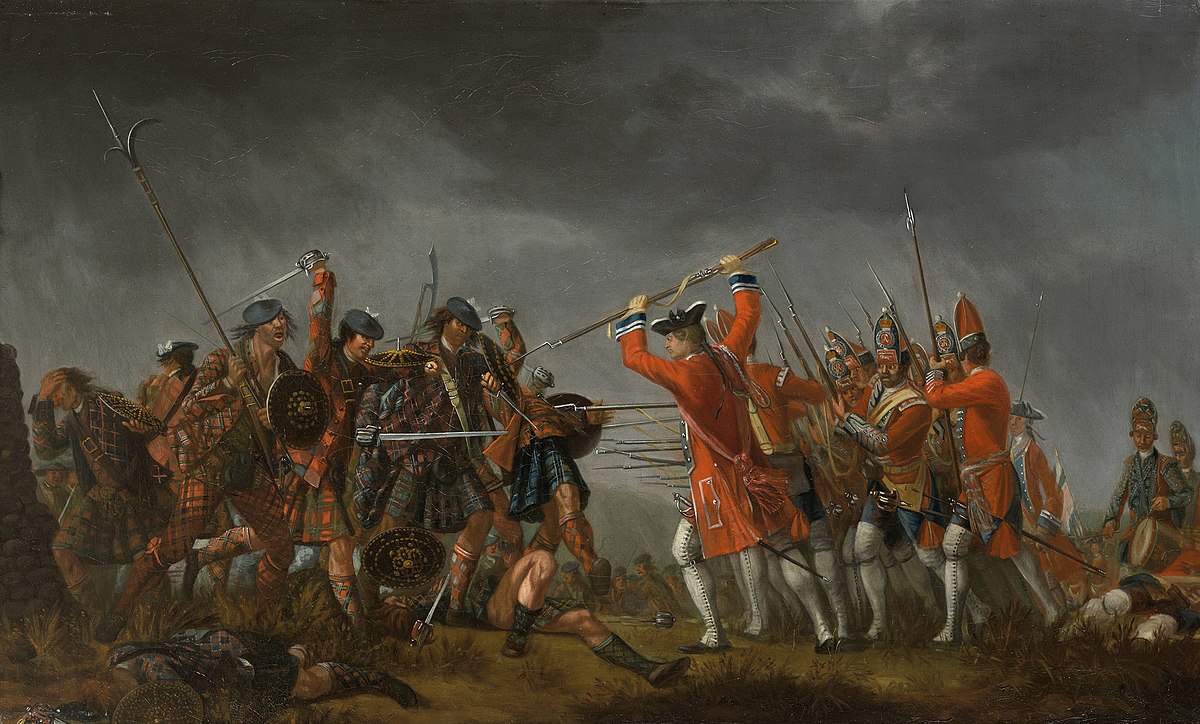
Battle of Culloden
Culloden MoorAt the Battle of Culloden in April 1746, the Jacobites, led by Charles Edward Stuart, faced the British government forces commanded by the Duke of Cumberland. The Jacobites positioned on common grazing land near the Water of Nairn, with their left wing under James Drummond, the Duke of Perth, and the right wing led by Murray. The Low Country regiments formed the second line. Harsh weather conditions initially affected the battlefield, turning to fair weather as the battle commenced.
Cumberland's forces began their march early, forming a battle line about 3 km from the Jacobites. Despite the Jacobites' attempts to intimidate the British forces, the latter remained disciplined and continued their advance, moving their artillery up as they approached. Cumberland reinforced his right flank, while the Jacobites adjusted their formation, resulting in a skewed line with gaps.
The battle commenced around 1 pm with an artillery exchange. The Jacobites, under Charles's command, advanced into heavy fire, including canister shots from the government forces. The Jacobite right, led by regiments such as the Atholl Brigade and Lochiel's, charged towards the British left but faced significant confusion and losses. The Jacobite left advanced more slowly due to challenging terrain.
In the close combat, the Jacobite right suffered heavy casualties but still managed to engage the government forces. Barrell's 4th Foot and Dejean's 37th Foot bore the brunt of the attack. Major-General Huske quickly organized a counterattack, forming a horseshoe-shaped formation that trapped the Jacobite right wing. Meanwhile, the Jacobite left, failing to advance effectively, was charged by Cobham's 10th Dragoons. The situation for the Jacobites worsened as their left wing collapsed.
The Jacobite forces eventually retreated, with some regiments, such as the Royal Écossais and Kilmarnock's Footguards, attempting to make an orderly withdrawal but facing ambushes and cavalry attacks. The Irish Picquets provided cover for the retreating Highlanders. Despite efforts to rally, Charles and his officers were forced to flee the battlefield.
Jacobite casualties were estimated at 1,500 to 2,000, with many deaths occurring during the pursuit. Government forces suffered significantly fewer casualties, with 50 dead and 259 wounded. Several Jacobite leaders were killed or captured, and the government forces captured numerous Jacobite and French soldiers.
